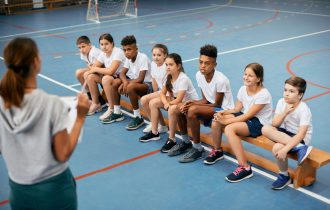Addressing Student Wellbeing during Remote Learning

Introduction
In the wake of the COVID-19 pandemic, remote learning has become the new normal for students worldwide. While online education offers many advantages, it also brings forth unique challenges, particularly concerning student wellbeing. As an editor of an English education website, it is crucial to address these concerns and provide strategies to support students during this transitional period. In this article, we will explore various ways to promote student wellbeing during remote learning, utilizing existing technology and real-life examples.
I. Recognizing the Importance of Student Wellbeing
Student wellbeing encompasses their physical, mental, and emotional health. It directly impacts their ability to learn effectively and thrive academically. Addressing student wellbeing during remote learning should be a priority for educators and parents alike.
II. Creating a Supportive Virtual Environment
- Establishing Regular Check-Ins Maintaining regular communication with students is essential to monitor their wellbeing. Teachers can schedule virtual check-ins to assess students’ progress, address concerns, and offer guidance. These interactions provide a sense of support and connection, ensuring students feel valued and cared for.
- Encouraging Peer Interaction Promoting peer interaction through online platforms fosters a sense of community and reduces feelings of isolation. By integrating discussion forums, group projects, and virtual study sessions into the curriculum, students can collaborate, share experiences, and support one another.
III. Leveraging Technology for Wellbeing
- Utilizing Mindfulness Apps Mindfulness practices have proven benefits for mental health. Recommending mindfulness apps, such as Calm or Headspace, to students can help them reduce stress, improve focus, and enhance overall wellbeing. These apps offer guided meditations, breathing exercises, and sleep aids that can be accessed anytime, anywhere.
- Providing Virtual Counseling Services Access to mental health support is crucial during remote learning. Schools can partner with online counseling services to offer virtual counseling sessions for students. This allows them to address emotional challenges, receive guidance, and develop coping mechanisms, all from the comfort of their homes.
IV. Promoting Physical Health and Active Breaks
- Encouraging Physical Activity Physical exercise has a profound impact on both physical and mental health. Encourage students to engage in regular physical activities by sharing workout videos, suggesting exercise apps, or organizing virtual fitness challenges. Regular movement boosts energy levels, reduces stress, and improves overall wellbeing.
- Implementing Active Breaks Extended screen time can lead to fatigue and decreased productivity. Encourage students to take short breaks between study sessions. Suggest activities like stretching, walking, or even dancing to help refresh their minds and bodies. These active breaks can improve focus and overall mental wellbeing.
V. Real-Life Examples of Successful Wellbeing Initiatives
- The JED Foundation’s Mental Health Resources The JED Foundation, a nonprofit organization, offers comprehensive mental health resources for students. Their online platform provides tools and guidance to address common challenges faced by students, such as stress, anxiety, and depression. Schools can collaborate with organizations like JED to ensure students have access to reliable mental health support.
- Harvard University’s “Healthy Eating Plate” Initiative Harvard University’s School of Public Health developed the “Healthy Eating Plate” initiative, which offers guidelines for balanced nutrition. Educators can incorporate these guidelines into remote learning by sharing healthy recipes, organizing virtual cooking classes, or conducting nutrition-focused assignments. Promoting healthy eating habits positively impacts students’ physical and mental wellbeing.
Conclusion
Remote learning presents a unique set of challenges for students, particularly regarding their wellbeing. By recognizing the importance of student wellbeing, creating a supportive virtual environment, leveraging technology, promoting physical health, and highlighting real-life examples, educators can address these challenges effectively. It is imperative that we prioritize student wellbeing during remote learning to ensure their success academically and holistically. As educators, we have the power to make a positive impact on students’ lives, even in the virtual classroom.


